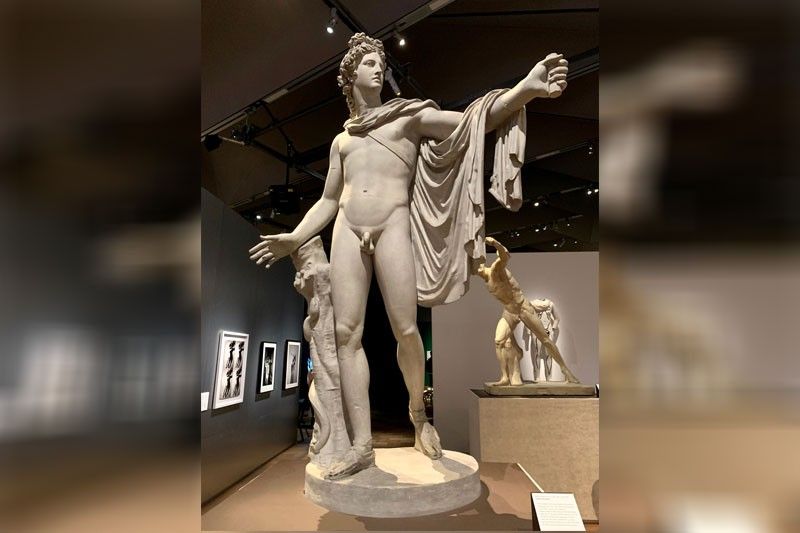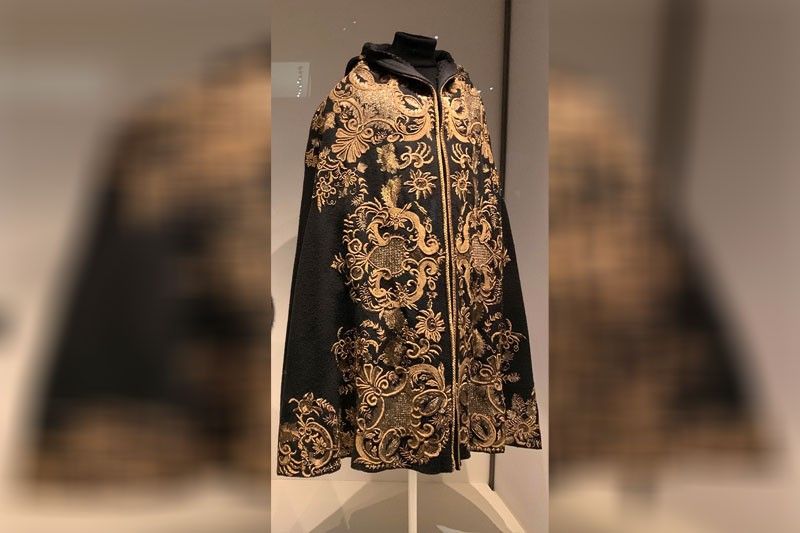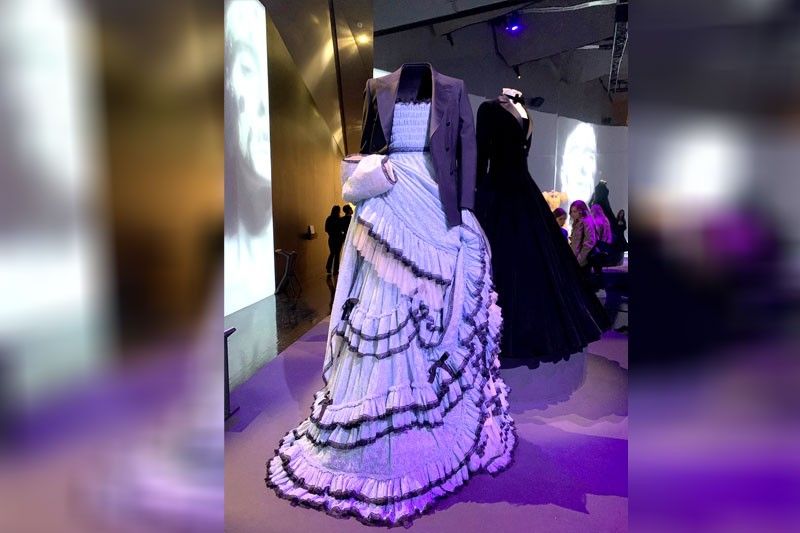The multiplicities of masculine sartorial expression

LONDON — As fashion exhibitions go, it’s usually womenswear that makes up the majority of items on show, that’s why it was a pleasant surprise when we chanced upon “Fashioning Masculinities” at the Victoria & Albert Museum.
It’s really “the first major V&A exhibit to celebrate the power, artistry and diversity of masculine attire and appearance.” Just the sheer breadth of what was featured and explored — historical garments and contemporary looks cross-referenced with classical sculptures, Renaissance paintings, iconic photographs, film and performance — makes you wonder, why only now?
“This idea that menswear wouldn’t be as exciting as womenswear — that’s the thing we want to dispel,” says co-curator Rosalind McKever. “Not only is it as beautiful, it’s fascinating that there are these power dynamics there that I think allows us to think about contemporary questions through fashion.”
Just how complex menswear has become is portrayed in Craig Green’s deconstructed suit, which looks like a sculpture with metal trusses holding the different components of a shirt — alluding to the construction and deconstruction of both the masculine body and conventions of masculinity, a recurring theme throughout the show.
Undressed
Deconstruction proceeds in “Undressed,” the first section where Roman and Greek statuary recall how it was fashionable in the 18th century for wealthy European men to visit Italy on a Grand Tour — buying new clothes, having their portraits painted, and admiring classical sculptures. Idealized, god-like forms have dominated European fashion ever since and many have tried to sculpt their bodies to emulate such unrealistic beauty standards through gym culture, cosmetic surgery and body-con clothing.
Jean Paul Gaultier’s trompe l’oeil jacket reflects this hypermasculinity by simulating naked musculature. The Farnese Hermes with its lithe figure idolizes youth, which garments like those by Hedi Slimane perpetuate with teenage-slim silhouettes.
The exhibit of nude statuary was actually controversial. When the plaster cast of Michelangelo’s David arrived at the V&A, Queen Victoria was shocked, prompting the museum to order a fig leaf to cover his genitals. The original suffered the same fate in 1504 in Florence, where authorities used a garland of brass fig leaves to do the same job. The plaster fig leaf is displayed alongside Vivienne Westwood’s briefs with a printed fig leaf on the crotch.
Contemporary fashion has made underwear, like the body itself, increasingly visible. At a time when the undressed male body is scrutinized more than ever, the push for inclusivity has become more pronounced, as seen in a portrait series “Arrested Movement” by Patrick Manieri that promotes positive body image. “Three Graces” shows how designers are appropriating sheer fabrics to allude to a new honesty in menswear.

Overdressed
The “Overdressed” section showcases the flamboyant way of dressing that has historically been a way for men to display power and wealth during times when sumptuary laws codified clothing according to gender and class. Even a French breastplate armor from 1565 served to both protect and impress, with elaborate bands of ornamentation that resemble fashionable embroidery on doublets.
Short capes, popularized in Spain, allowed men to drape themselves in opulent fabrics, like that of Prince Alessandro Farnese in a 1560 portrait, where his cape has become stiff from so much gold and silver embroidery. Contemporary versions from Dolce & Gabbana and Randi Rahm are just as lavish.
Color was another way of expressing status since dyes were costly to create. 18th-century men had no qualms about wearing pink or intricate, all-over patterns.
In France, however, such luxury was despised by the Revolutionary sans-culottes (without breeches) who transformed menswear with their utilitarian trousers. Jacques Cazotte, who wears pink silk and lace in a portrait, opposed the transformation and wanted to hang on to his fineries, thereby earning the ire of the revolutionaries who sent him promptly to the guillotine.
Ironically, when synthetic dyes made brilliant hues widely available in the 1850s, menswear became more restrained and drained of color, with only a brief revival in the 1960s and ’70s. Recently, men are reclaiming color and pattern to strut like peacocks again.

Redressed
In “Redressed,” the final section, the uniform of the suit is highlighted, showing how tailors channeled masculine beauty into the body-sculpting construction and subtle details in a dark, somber palette that became the new status symbol. With mass production from the 19th-century onwards, the suit became accessible to all — an abundance that bred creativity as mid-20th-century subcultures defined their own styles.
Although the traditional craft of tailoring still has international appeal, fashion designers have been “dissolving the suit” by reinventing two centuries of conventions, as seen in Alexander McQueen’s FW 2009 half-coat, half-cape with a slashed top.
As a finale, to herald a future where men can shape their own masculinities, three gowns worn by celebrities are displayed: Billy Porter’s tuxedo gown by Christian Siriano worn at the Oscars red carpet in 2019; Bimini Bon Boulash’s wedding dress by Elly Lynch worn for Ru Paul’s Drag Race UK; and a 2020 Alessandro Michele for Gucci custom gown worn by Harry Styles as the first solo male cover star of US Vogue.
More than just being able to wear what one wants, what’s important is that one has the freedom to express oneself and live one’s life without conforming to established male tropes. As Michele said in a quote displayed in the exhibit, “It’s time to celebrate a man who is free to practice self-determination, without social constraints, without authoritarian sanctions, without suffocating stereotypes.”
* * *
Log on to www.vam.ac.uk Follow the authors on Instagram @rickytchitov; Twitter @RickyToledo23; Facebook - Ricky Toledo Chito Vijandre.



















